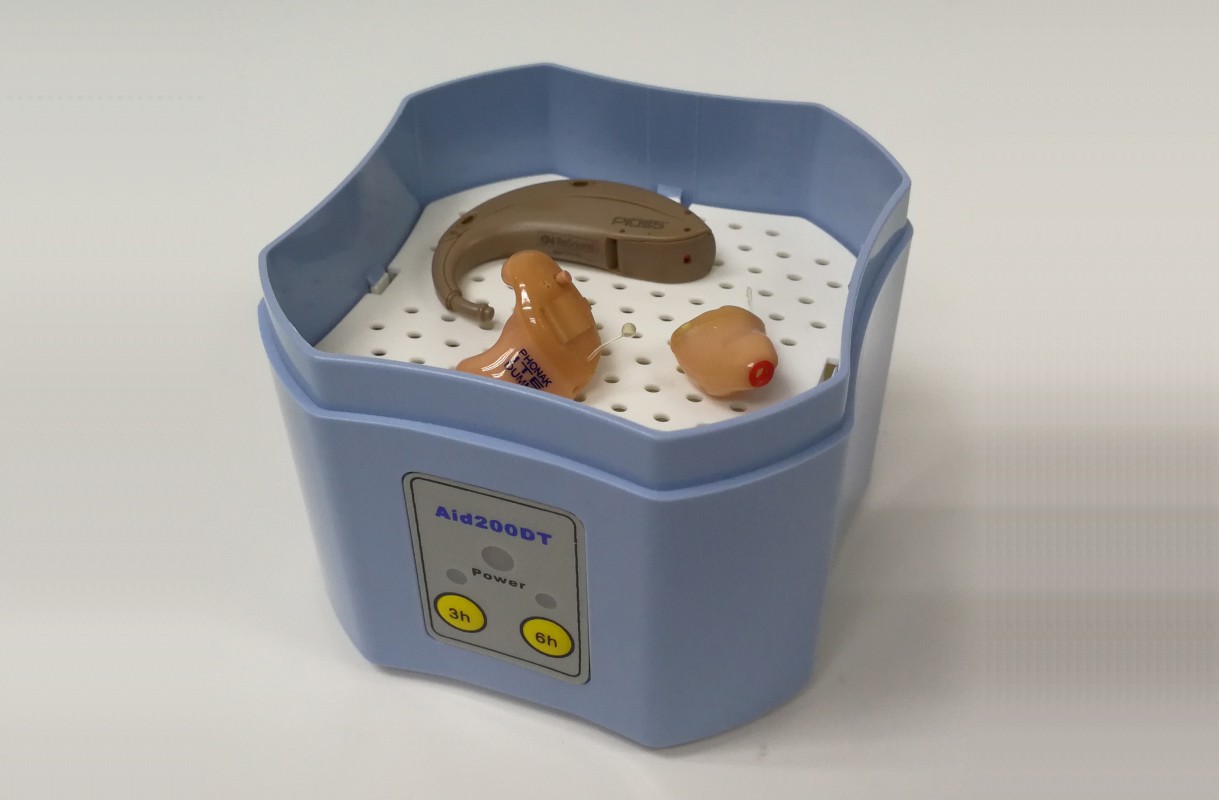Hearing aids should also be protected from cold in winter
When the cold wave hits, people pay attention to keep warm and exercise properly, and do a good job of autumn and winter health protection. The "health" of hearing aids can not be ignored. How to make the hearing aids cold and warm in winter?
1.Moisture
In the autumn and winter, the indoor and outdoor temperature difference is large, and the water vapor generated in the air and in the human ear can easily condense inside the sound tube and the hearing aid, affecting the conduction of sound, resulting in a small sound or even no sound, and even corroding internal components.
Please check the sound tube of the hearing aid every day. When there are water drops, pull out the sound tube, pull out the water drops, and use a paper towel to twist the thin wire to dry the tube wall. When the hearing aid is not used for a while, the hearing aid is removed and placed in a dry box to keep the hearing aid dry every day. The discoloration of the desiccant in the drying box should be replaced in time to avoid affecting the drying effect.
The hearing aid should be removed before swimming and shampooing. If the hearing aid is accidentally wetted, the hearing aid should be placed in a dry box after being wiped off in a timely manner. Do not use fire, microwave or other treatment.

2.Anti-static
The autumn and winter seasons are relatively dry, and static electricity on the hands may cause the hearing aids to be short-circuited, silent, or even damage internal components.
Please touch the table or the wall by hand before taking the hearing aid, and then take the static electricity and take the machine. Try to choose soft cotton natural materials for autumn and winter clothing, and use less chemical fiber clothing. You can also apply hand cream to moisturize your hands to avoid static electricity.
3.Make good use of the battery
In the autumn and winter, the ambient temperature is low, and the performance of the hearing aid (zinc air) battery is greatly affected by the low temperature, and the battery life is also significantly shortened. When the battery power or voltage is below a certain level, the hearing aid will sound a tone, or the sound will be mutated, intermittent, or even the hearing aid will stop working.
When replacing a new battery, it is recommended to uncover the film on the battery and let it stand in the air for 2-3 minutes. When the ambient temperature is too low, you can use your hand to heat the battery and put it into the hearing aid, which will help the battery work better and ensure the performance of the hearing aid. Stable; if not used for a long time, please take out the battery to prevent the battery from leaking and coringing the hearing aid.
4.Careful handling
The ambient temperature is low in autumn and winter, and the temperature difference between indoor and outdoor is large, which has certain influence on the performance of the material of the hearing aid shell. If the overheating or temperature difference changes drastically, the bearing capacity will be insufficient, and it will be brittle when subjected to external force, and even cause internal device vibration.
Winter hearing aids should be handled with care. After the hearing aids are removed, they should be placed in a safe place to prevent falling and being squeezed by external forces. It is best to develop the habit of storing hearing aids. It is recommended to store them in a dry box.
5.Daily cleaning
When wearing a hearing aid, the body's own excrement (such as ear wax, ear secretions, etc.) will affect the performance and life of the hearing aid to varying degrees.
It is recommended to clean the earwax and sweat on the surface of the hearing aid with a soft, dry cloth after daily use. For behind-the-ear hearing aids, if the sound tube is found to be blocked by earwax or impurities, clean it immediately. For custom hearing aids, check the baffle (microphone inlet) for earwax or impurities. Also check to see if the vent is blocked. Use a small brush that is equipped with the brush.

category
